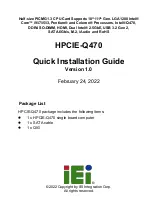
Data Sheet
54
Rev. 1.00
2017-07-31
TLE9262BQXV33
External Voltage Regulator 3
Figure 19 Protecting the VCC3 against inductive short circuits when configured as an independent
voltage regulator for off-board supply
8.2.2
External Voltage Regulator in Load Sharing Mode
The purpose of the load sharing mode is to increase the total current capability of VCC1 without increase of
the power dissipation within the SBC. The load current is shared between the VCC1 internal regulator and the
external PNP transistor of VCC3.
Figure 20
shows the setup for Load Sharing. Load Sharing is active in SBC
Normal Mode. It can also be configured via SPI to stay active in SBC Stop Mode.
An input voltage up to
V
Sx,MAX
is regulated to
V
CC3,nom
= 3.3 V with a precision of ±2% when used in the load
sharing configuration in SBC Normal Mode.
This configuration is set and locked by enabling
VCC3_LS
for the first time while
VCC3_ON
has no function, i.e.
keep
VCC3_ON
= 0. Trying to change the VCC3 configuration after
VCC3_LS
has been set will result in the
SPI_FAIL
bit being set and keeping the VCC3 configurations unchanged. Load sharing will be automatically
disabled (only if
VCC3_LS_ STP_ON
= 0) during SBC Stop Mode due to power saving reasons but the bit will
remain set to automatically switch back on after returning to SBC Normal Mode. It must be ensured that the
same VCC3 output voltage level is selected as for VCC1.
In this configuration VCC3 has no undervoltage signalization. VCC3 shuts down if Fail-Safe Mode is reached,
e.g. due to undervoltage shutdown (V
S,UV
monitoring).
VCC3 has no overcurrent limitation in this configuration and the shunt resistor is defining the load sharing
ratio between the VCC1 and VCC3 load currents (see
Equation (8.2)
in
Chapter 8.4
). Thus, no overcurrent
condition
VCC3_OC
will be signaled in this configuration.
R
BE
V
S
- V
CC3shunt
> V
shunt_threshold
V
REF
State Machine
+
-
I
CC3base
VCC3REF
VCC3B
VCC3SH
VS
R
SHUNT
T1
C
2
C
1
V
S
V
CC3
I
CC3
R
Lim
100
Ω


































